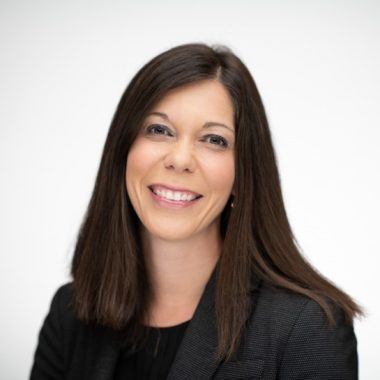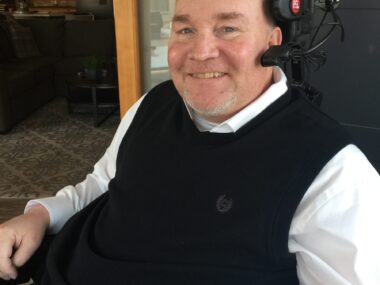Project Aims to ‘Bridge the Gap’ in Care Disparities for Latinos With MS
Language and culture seen as impediments to Hispanic community seeking help
Written by |

MedStar Georgetown University Hospital in Washington, D.C., selected Luis Manrique-Trujillio, MD, as its fellow. (Courtesy of MedStar Georgetown Hospital)
When Sarah Garcia was diagnosed with the relapsing-remitting form of multiple sclerosis (MS) at age 13, she didn’t know any other young Latino women with the neurodegenerative disorder.
Garcia grew up in a tight-knit Hispanic community in Socorro, Texas, near El Paso. Most of her doctors were white, as were most of the MS support groups she attended. Now 27 and working as a school psychologist in central Texas, Garcia can think of only four other Hispanic people with MS.
“I think my community is a little scared of reaching out and asking for help,” Garcia said in a phone interview with Multiple Sclerosis News Today. “So it was really hard not seeing people that represented the way I looked — young and brown.”
Barriers to care for Latinos

Luis Manrique-Trujillo, MD, started his fellowship in D.C. last month. (Courtesy of Luis Manrique-Trujillo)
That lack of representation is a concern that Luis Manrique-Trujillo, MD, a new fellow at the MedStar Georgetown University Hospital in Washington, D.C., wants to understand better and address.
Manrique-Trujillo, who recently completed his neurology residency at OSF Healthcare St. Francis Medical Center, was selected by Georgetown University Hospital for an EMD Serono-funded fellowship, which will focus on addressing barriers to care for Latinos.
He is a native Spanish speaker from Colombia and completed medical school in Bogotá, but it wasn’t until his residency in Illinois that he realized some of the issues facing Latinos with MS in the U.S. Many became his patients because he was one of the few providers who could speak with them.
“Then I realized how they struggle because for them it takes longer to get access to the appointments and it’s difficult for them to communicate because some of them don’t speak English very well,” Manrique-Trujillo said in a video interview.
Garcia noticed the same phenomenon, especially among those who aren’t as fluent in English as she is. Cultural differences make it even more difficult for Latinos to accept care.
“Latino people usually don’t like asking for help and they kind of want to stick it out,” Garcia said.
The overall incidence of MS among Latinos is still poorly understood, Manrique-Trujillo said, owing to the fact that for a long time MS was thought to primarily affect middle-aged white women. In fact, MS affects 2.9 out of every 100,000 Latinos, according to a recent study. Manrique-Trujillo suspects even that estimate could be low.
“Maybe we are not diagnosing them or they are not coming to seek attention, for some reason, so that’s part of the project as well,” Manrique-Trujillo said.
Focus on diversity, equity, and inclusion
The “I’m IN” Neurodisparity Fellowship is part of a larger push by EMD Serono to focus on diversity, equity, and inclusion (DE&I). It will offer up to $150,000 to cover fellow salaries and overhead, according to the company’s request for proposals.

Lori Lebson PhD, head of U.S. Medical Affairs for Neurology and Immunology at EMD Serono, wants the fellowship to have a “ripple effect” in the community. (Courtesy of EMD Serono)
EMD Serono’s broader fellowship program will also fund two physicians out of an MS center at the University of Pennsylvania to look at societal and institutional barriers for MS patients in Pennsylvania.
This new commitment to DE&I through the “I’M IN” fellowship grew out of a 2019 study from the American Academy of Neurology Diversity Leadership Program, which found that people from ethnic and racial minority groups have “lower rates of evaluation, diagnosis, and intervention, and consequently [experience] worse neurologic outcomes than their white counterparts.”
One of the primary goals of the fellowship is to help bridge the gap between minority patients and care, even after physicians like Manrique-Trujillo have completed their work, according to Lori Lebson, PhD, head of U.S. Medical Affairs for Neurology and Immunology at EMD Serono. That goal was what separated Georgetown’s proposal from the other 40 the company reviewed.
Manrique-Trujillo plans to create a continuing clinic for Latinos with MS as part of the final stage of his two-year fellowship.
“We didn’t want people just to identify that we know there’s a problem in neurodisparity, but focus more on action items and strategies that could then be replicated at centers across the U.S. and across the world and maximize that impact and that ripple effect,” Lebson said in a video interview.
Manrique-Trujillo, who began his fellowship about a month ago, will start his work by understanding the care landscape and finding social, demographic, and geographic data on the Latino MS population. That means determining the real incidence of MS among Latinos in the D.C. area and the U.S. Three other attending physicians with neurology specialties are also heavily involved in the fellowship and are providing mentorship and guidance.
Initial findings show 16% of the population in D.C. is Hispanic, but only 4% of patients treated at the Georgetown Medstar MS center are Latino. Manrique-Trujillo hopes the number of Latino patients treated there will double after his fellowship has concluded.
Importance of ‘showing more Latino stories’
The second phase will focus on outreach to the surrounding Hispanic community in D.C. That means distributing videos, pamphlets, and other advertising materials in Spanish, which will focus on the signs and symptoms of MS, living with the condition, and treatment options. Manrique-Trujillo also hopes to recruit more patients to the center through area charities that help Latinos with MS.
With the knowledge gained from the population study and interactions with the community, Manrique-Trujillo plans on implementing a Latino access clinic for MS and a teleneurology program. Both initiatives will continue after the fellowship, and he hopes it will be replicated elsewhere in the country.
Garcia said one way to ensure the MS Latino community receives better care is in “showing more Latino stories and knowing that they’re represented more in pamphlets and more in media, and the medical team coming out and reaching out themselves to our community,” she said.
For Manrique-Trujillo, the program’s success hinges in part on identifying the barriers to care, be they immigration status, language, or a mistrust of the system. He hopes that when he reaches out to the Latino community, he’ll be able to bridge that gap between patients and physicians.
He knows what he wants to say to the people he intends to reach out to: “We are here for you; we want to take care of you. Don’t be afraid.”







